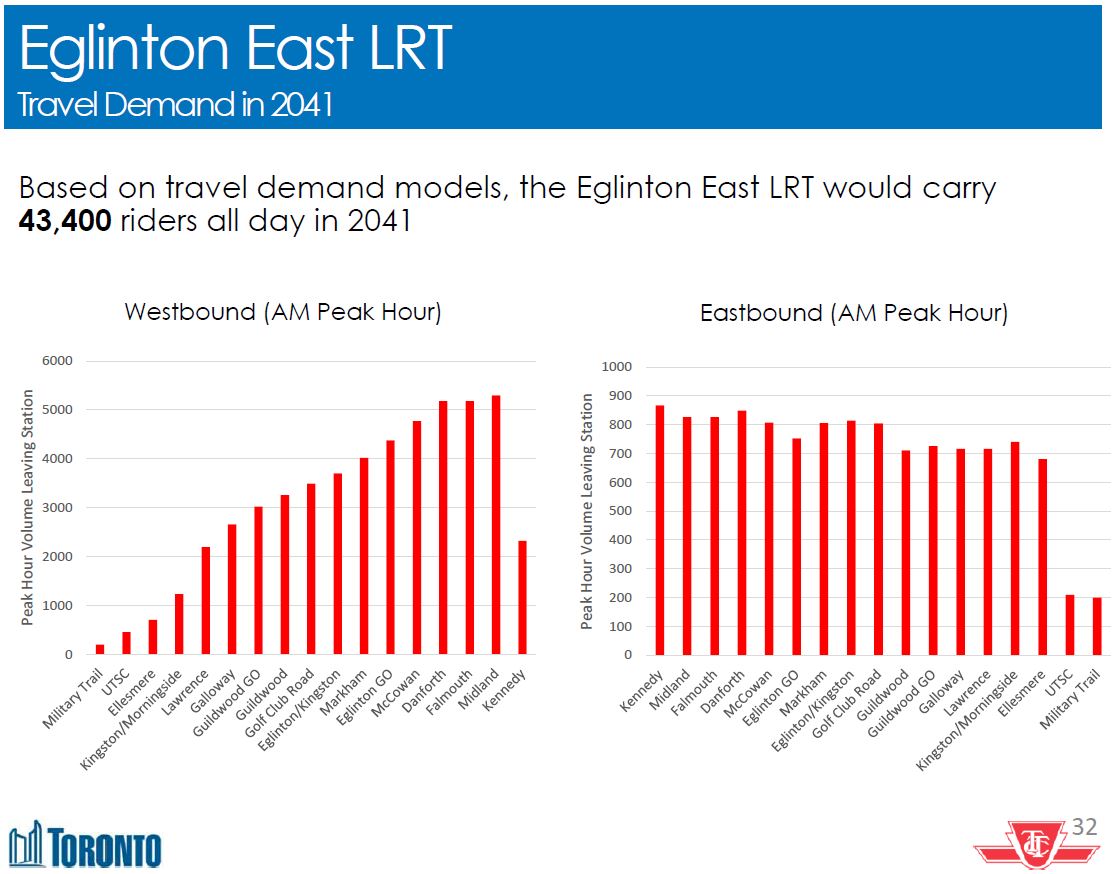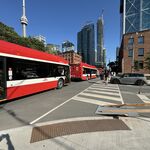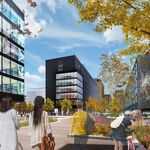denfromoakvillemilton
Senior Member
Member Bio
- Joined
- Apr 30, 2008
- Messages
- 7,452
- Reaction score
- 1,515
- Location
- Downtown Toronto, Ontario
It absolutely doesn't depend.
The ridership numbers, current and future, are far less east of Kennedy Station than they are to the west. Ergo, the headways will be quite a bit different - and thus may not blend well. As well, where are those people from the east of Eglinton heading to? Probably two-thirds are currently heading down the B-D - assuming that that ratio stays fairly similar to that in the future, they won't benefit from a through-running line in any case. And finally, longer transit lines have more problems with headway adherence - so why make the line any longer than you have to when the benefits are so minimal?
Dan
Toronto, Ont.
That is an assumption that has never actually been studied.
When Transit City was being studied, they assumed SMLRT to be its own line. Crosstown East report hasn't produced numbers on number of transfers at Kennedy, or the downstream affects on the Crosstown heading towards Yonge.

Westbound into Kennedy ridership is projected to be around 5,250 pphpd. The westbound peak ridership of the Crosstown LRT is westbound into Yonge Station at 5,400 PPHPD. Both ridership projections are essentially equal.
The only place on the LRT network that will have significantly higher peak ridership is eastbound into Eglinton West Station, with its ridership expected to be around 7,000 pphpd.
The impact of Crosstown West on the ridership of the central Crosstown hasn't yet been evaluated. But let's say 3,000 of the 5,250 Crosstown West westbound peak hour trips continue to Yonge Street. In that case, the peak ridership of Crosstown West would be 5,250 westbound into Kennedy and the peak hour of the central Crosstown will be 8,400 pphpd westbound into Yonge Street. Those ridership aren't equal, but it's not such a great imbalance that I believe it would cause issues.
It's also worth noting that City Planning wants the Relief Line northern extension under construction within the next 15 years. It is yet to be seen how this will impact the Crosstown. My hunch is that, because the Scarborough to Downtown trip is faster on the Crosstown + Relief Line than it is on the Crosstown + Yonge line, we'd have significantly greater westbound ridership east of Don Mills Station than west of it.
Looks like you're right about that. 5,250 pphpd travel west into Kennedy. 3,000 of them transfer to other services. 2,250 continue west on the Crosstown.
However it's not clear to me if the 2,250 riders that continue West past Kennedy Station includes boardings at Kennedy Station. But ridership evaluations for the Crosstown LRT (not including west or east extensions) expected that 2,500 people would board at Kennedy. This suggests that the westbound ridership projections for the Crosstown East LRT did not include westbound boarding at Kennedy (otherwise ridership westbound ridership at Kennedy would be significantly higher than 2,500 pphpd).In that case, if there are 2,500 westbound boardings at Kennedy and 2,250 Crosstown East riders continuing westbound past Kennedy, ridership immediately west of Kennedy would be 4,750 pphpd. Thus the westbound ridership immediately east and immediately west of Kennedy are approximately equal.
And what happens if DRL to Eglinton happens? Do 2\3 of passengers carry on?
I agree it hasn't been studied, but it is quite easy to visualize the number of riders being high west of Kennedy unless the lines are run to force people a certain way - and that would be a repeat of the SRT forced transfer that bogged down transit planning for a decade.
It depends on their destinations. I imagine most people heading to financial district area would transfer at Don Mills and Eglinton. Those heading to Bloor-Yonge or Eglinton-Yonge would contine to Eglinton.
It is too early to say with certainty IMO because commuting patterns will change greatly. For instance, a number of people might end up choosing to bypass Yonge and head to Eglinton West to transfer to Spadina line instead.
My take on your second question is this: The Eglinton Crosstown should be faster to reaching Yonge Street than the Bloor-Danforth line from Kennedy Station. Yonge-Eglinton Station should also be less crowded than Bloor-Yonge Station, both the platform and the train itself, making it an easier transfer point for people. Therefore, people who intend to transfer on the Yonge line should be motivated to stay in their seats at Kennedy rather than to transfer to Line 2. (And these people might be intercepted by the Relief Line if it were extended to Eglinton.)
I pondered this point of view recently as I stood at Humber Loop in a cold wind, kicking the slush off my boots, looking at the 501 car I had just got off and wondering when the 501 car I needed to carry me onwards would turn up.
It makes perfect sense unless you are the commuter stuck out in the weather.
Shouldn't we be trying to solve the scheduling and operating problems instead of allowing them to drive the design to lowest-possible service standards?
- Paul
I have to go with everyone else Dan. The transfer, has bad political implications. Yes the line is long, but I would rather that then another political battle 15 years from now.
Agreed. I would think as many people would use the DRL long as possible.No one will transfer twice. Scarborough to
Financial = SRT\Eg to DRL
Union = SRT/Eg to Yonge south.
Hospital Row = SRT\Eg to Spadina line south.
Y-B = SRT to B-D
York U = SRT/Eg to Spadina line north
Y-E or YYZ = stay on SRT/Eg.






